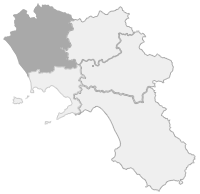Four parchments, considered for the history as the oldest documents written in vernacular language (Italian volgare): they are the so-called “Placiti campani” or Placiti Cassinesi, dating back to the period of the Lombard principality of Capua, between 960 and 963.
More specifically, these are three placiti and a memoratorio (the one signed in Teano), all linked to as many legal conflicts about the limits of the Benedictine monasteries of Capua, Sessa Arunca and Teano, which depended on the abbey of Montecassino. The most ancient of all, the placiti (juridical document) signed in Capua, is about a conflict over the property limits of Montecassino monastery with a private individual, Rodelgrimo d’Aquino. The document, like the other three similar ones, contains sworn testimonies written by the judge and repeated by the witnesses before being registered by the notary. “Sao ko kelle terre…”, is the incipit of the juridical formula that, for the first time, is not expressed in latin, as it used to be and as it will still be used for a long time in official documents, but in the Campania Vernacular language, which obtained a recognition as a language of learning, usable also in the chivalrous and formal languages as well as in daily communication, maybe with the aim of making accessible to a wider audience the content of the testimony. The dawn of the Italian language…




Comments powered by CComment